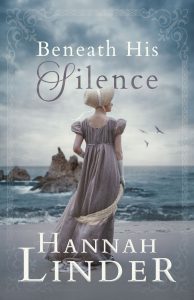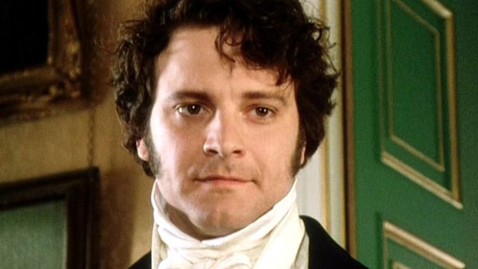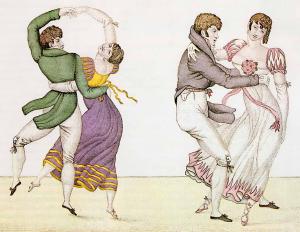I’m so excited to introduce everyone to Hannah Linder. Hannah is a debut Regency Suspense author with Barbour Publishing. I had the privilege of meeting Hannah at the Blue Ridge Mountain Christian Writers Conference last spring and knew I wanted to host this promising young author on Romancing History to help spread the word about Beneath His Silence.
Hannah is going to introduce us to the hero of Beneath His Silence, Lord Henry Sedgwick
Be sure to visit the Giveaway section at the bottom of the post to learn how you can enter to win a print copy of this intriguing debut.
Meet the Character
 My name is Lord Henry Sedgwick of Wyckhorn Manor. I pray you have not heard whispers of me, though it is far more likely you have. Has not everyone? That is why I must remain in my manor, far from the rumormongers of the village, where I might raise my son without the torture of their speculations. But tortures reign here, too. The manor is cursed with silence. My son is motherless. Bloody shirtsleeves are hidden in my upstairs bedchamber, a painful reminder of all I must keep buried, even from the new and charming governess. That, however, may be harder than I realized. Especially when she begins unwinding my heart.
My name is Lord Henry Sedgwick of Wyckhorn Manor. I pray you have not heard whispers of me, though it is far more likely you have. Has not everyone? That is why I must remain in my manor, far from the rumormongers of the village, where I might raise my son without the torture of their speculations. But tortures reign here, too. The manor is cursed with silence. My son is motherless. Bloody shirtsleeves are hidden in my upstairs bedchamber, a painful reminder of all I must keep buried, even from the new and charming governess. That, however, may be harder than I realized. Especially when she begins unwinding my heart.
Fast Five
Lord Segwick, please tell us five things about yourself.
I Like . . .
- Brushing down and stabling my own horse, Miss Staverley
- Playing along the beach with my five-year-old son
- Avoiding balls and social obligations
- Assisting my tenants, especially those who are old or poor
- Accepting apologies from my son’s amusing governess
Character Q & A
RH: What is your greatest fear? What keeps you up at night?
LS: My greatest fear is that the lies will be uncovered and people will know the truth—that my son will know the truth.
RH: What is your biggest pet peeve?
LS: I detest coy, conniving, maidenly smiles that only mean to entrap me. I shall not be fooled again.
RH: What is your greatest achievement?
LS: Raising Peter, my son.
RH: What is your biggest secret?
LS: The bloody shirtsleeves hidden in my bedchamber. I pray to heaven no one ever knows what I have done.
RH: What book are you reading right now?
LS: The Bible. I have placed one outside Miss Woodhart’s bedchamber door, but I hardly know if she will read the book. I cannot help wondering why it should matter to me so much if she does.
RH: What does perfect happiness look like to you?
LS: A manor with no curse and no silence. A mother for my son. A heart that does not writhe in guilt. A woman, perhaps like Miss Woodhart, who could be true to me and love me and smile at me without pretense. But I do not know if such a woman exists. I do not know if I deserve her if she does.
 About the Book
About the Book
Will Seeking Justice Lead to Her Own Demise?
A Gothic-Style Regency Romance from a Promising Young Author
Second daughter of a baron—and a little on the mischievous side—Ella Pemberton is no governess. But the pretense is a necessity if she ever wishes to get inside of Wyckhorn Manor and attain the truth. Exposing the man who killed her sister is all that matters.
Lord Sedgewick knows there’s blood on his hands. Lies have been conceived, then more lies, but the price of truth would be too great. All he has left now is his son—and his hatred. Yet as the charming governess invades his home, his safe cocoon of bitterness begins to tear away.
Could Ella, despite the lingering questions of his guilt, fall in love with such a man? Or is she falling prey to him—just as her dead sister?
Amazon Barbour B&N
 About the Author
About the Author
Hannah Linder resides in the beautiful mountains of central West Virginia. Represented by Books & Such, she writes Regency romantic suspense novels. She is a double 2021 Selah Award winner, a 2022 Selah Award winner, and a member of American Christian Fiction Writers (ACFW). In way of career, Hannah is a Graphic Design Associates Degree graduate who specializes in professional book cover design. She designs for both traditional publishing houses and individual authors, including New York Times, USA Today, National, and International bestsellers. She is also a local photographer and self-portrait photographer. When Hannah is not writing, she enjoys playing her instruments—piano, guitar, and ukulele—songwriting, painting still life, walking in the rain, and sitting on the front porch of her 1800s farmhouse. To follow her journey, visit hannahlinderbooks.com.
Newsletter Facebook Instagram Goodreads Bookbub Amazon Author Page
Giveaway*
This giveaway is now CLOSED!
Congratulations to our winner, Cherie J.!!!
To enter the giveaway for a print copy of Beneath His Silence, let us know what era of history you’d like to visit if you could step into a time machine.

 Sarah Drayton is eager to spend time with her best friend at her crumbling Northumberland castle estate. Matrimony is the last thing on her mind and the last thing she expects to be faced with on a holiday. Yet she finds herself being inveigled into a marriage of convenience with her friend’s rakish brother.
Sarah Drayton is eager to spend time with her best friend at her crumbling Northumberland castle estate. Matrimony is the last thing on her mind and the last thing she expects to be faced with on a holiday. Yet she finds herself being inveigled into a marriage of convenience with her friend’s rakish brother. Carolyn Miller is an inspirational romance author who lives in the beautiful Southern Highlands of New South Wales, Australia, with her husband and four children.
Carolyn Miller is an inspirational romance author who lives in the beautiful Southern Highlands of New South Wales, Australia, with her husband and four children.

 Austen didn’t put her name on her novels, and would only say they were “By a Lady.” The title page of Pride and Prejudice said, “by the author of Sense and Sensibility.” It wasn’t until after her death that her brother revealed her name to the public.
Austen didn’t put her name on her novels, and would only say they were “By a Lady.” The title page of Pride and Prejudice said, “by the author of Sense and Sensibility.” It wasn’t until after her death that her brother revealed her name to the public.













